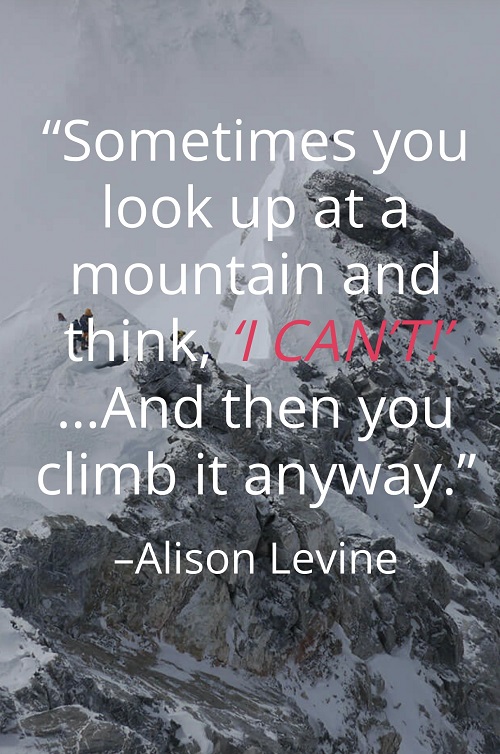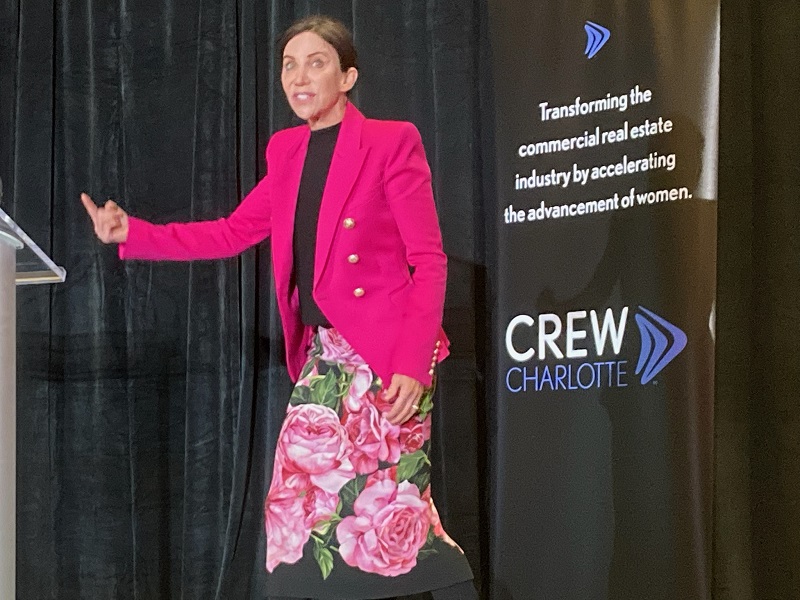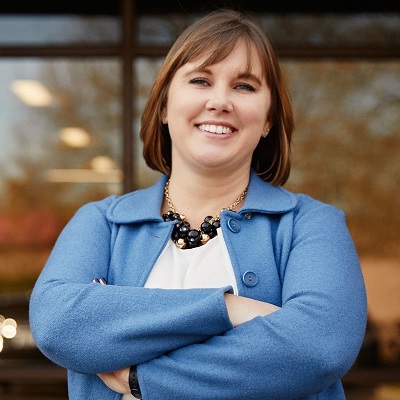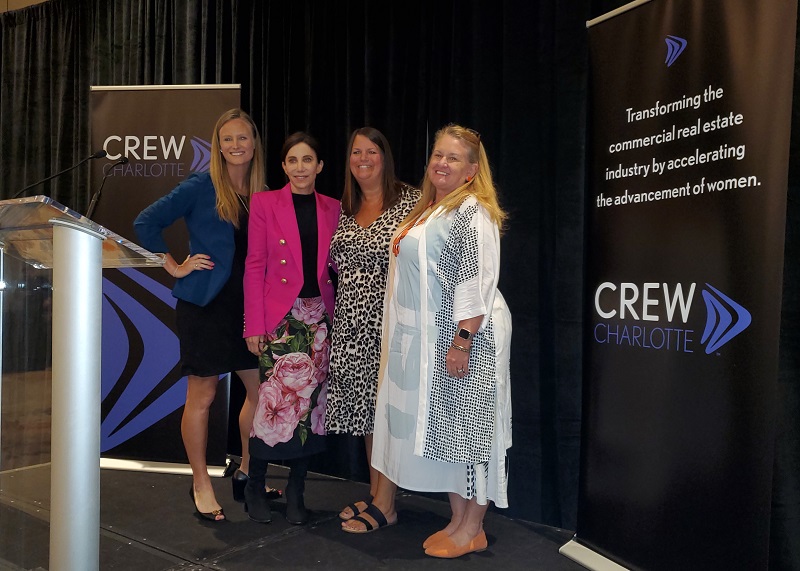
Lessons in Leadership: CREW Charlotte Hosts Leader of First All-Women Everest Expedition
Where do we learn most of our leadership lessons? Maybe from our parents, role models, trial and error. For Allison Levine, her leadership lessons were learned on the side of a mountain, a very large mountain, during a two-month expedition to climb Mt. Everest. During the CREW Signature luncheon in Charlotte this spring, 250 women gathered to hear the tales from the leader of the first all-women Everest expedition. When Levine was asked to be the team captain for the expedition in 2002, she was nervous – she didn’t think she was qualified or capable. But she realized that there are times in your life when you need to step up, so she did.
During her presentation, she shared these lessons learned with the audience.
- When trekking Everest, you must adjust to the altitude. You hike for hours in treacherous conditions to a checkpoint, and then you turn around and go back to base camp. This happens over and over every day. While it is frustrating, it is necessary to maintain your health. These seemingly redundant trips are key to getting you acclimated to the altitude. Otherwise, you will not be able to make the climb. The lesson is that backing up is not backing down. Sometimes you have to go backwards to make progress. Even if it seems like it is slowing you down or keeping you from making progress, you may have to go backwards, regroup, and reassess the situation to get where you want to.
- The first few feet up the mountain is over ice crevasses, and the walk is precarious. Hikers wear spikes on their boots and have ice picks to help secure steps. A series of ladders tied together is how you traverse some of the terrain. The crevasses are deep, where one wrong move could lead to a serious injury or death. It is scary to keep taking steps, which brings the next lesson. Fear is okay – it’s normal! As long as you keep moving, act and react quickly, and rely on the tools you have to get the job done, you’ll make it out on the other side. In fact, it’s complacency that kills. If you stay stuck in that fearsome situation, you’ll never make it out alive.
- The conditions on Everest are shifting and changing rapidly, which is similar to what we all have experienced the past few years. Most likely, strategic plans were in place for 2020 goals and strategies set. Then a pandemic hit and the plans went out the window. Hiking Everest is similar, with plans for each of the team’s moves laid out weeks in advance. However, the weather conditions change, rapidly. In order to survive hikers must take action based on the situation at hand, not the plan. Plans need to change because the elements are constantly changing.
- On Everest, you trek as a team. The leader makes decisions, but you all stay together. In 2002, the team was on its very last stretch of the two month long expedition. Levine, along with the guides, had to make the tough call to turn around and climb down the mountain. The weather had turned and it was going to be too dangerous to keep going. They did not make the goal of making it to the summit. At that point, after training and hiking for months, it was a disappointing moment. But the lesson is that sometimes you have to make a tough decision because you have to think about those around you. A single person’s poor judgement can bring down the whole team. A few years later, Allison did make it to the summit of Everest. It was her goal, and she just had to keep putting one foot in front of the other to achieve it.
- Finally, just because you are doing something with a group of people with the same goal, it doesn’t make you a team. What makes a team is each person caring about those around them and that they achieve their goals. In the workplace, this is an excellent reminder that in order to succeed, those around us need to succeed as well. No one gets to the top of the mountain by themselves.
Levine offered many more takeaways, and while I won’t be using her insight for any upcoming Everest treks, I will take her thoughts to heart as I work on how I lead my team and organization. As we have all been weathering the ups and downs of the pandemic storm, or perhaps a personal storm of our own, one final thought is that the storms are always temporary, and the sun usually comes out in the end.


Main Photo (top of page): (L to R) Stacia Neugent (GreerWalker), Allison Levine, Patty Trepp Drummond (CREW Charlotte), Mary Wilken (Insite Properties).
About the Author – Sara Downing is Director of Business Development for Clancy & Theys Construction Company. Founded more than 70 years ago in Raleigh, NC, the company remains headquartered there with additional offices in Charlotte and Wilmington, NC; Newport News, VA; and Orlando, FL.

ABOUT CREW CHARLOTTE – Founded in 1990, CREW Charlotte has grown its membership to over 350 real estate professionals! We strive to build our membership to form a diverse organization consisting of commercial real estate professionals in the Greater Charlotte Region who are leaders in all real estate disciplines, including brokers, attorneys, engineers, lenders, developers, appraisers, accountants, property managers, and title professionals. CREW Charlotte is a Chapter of CREW Network, a global organization with over 12,000 members in over 75 major markets, focused on promoting business, providing educational opportunities, and sharing information among members at local, regional, and national levels.






